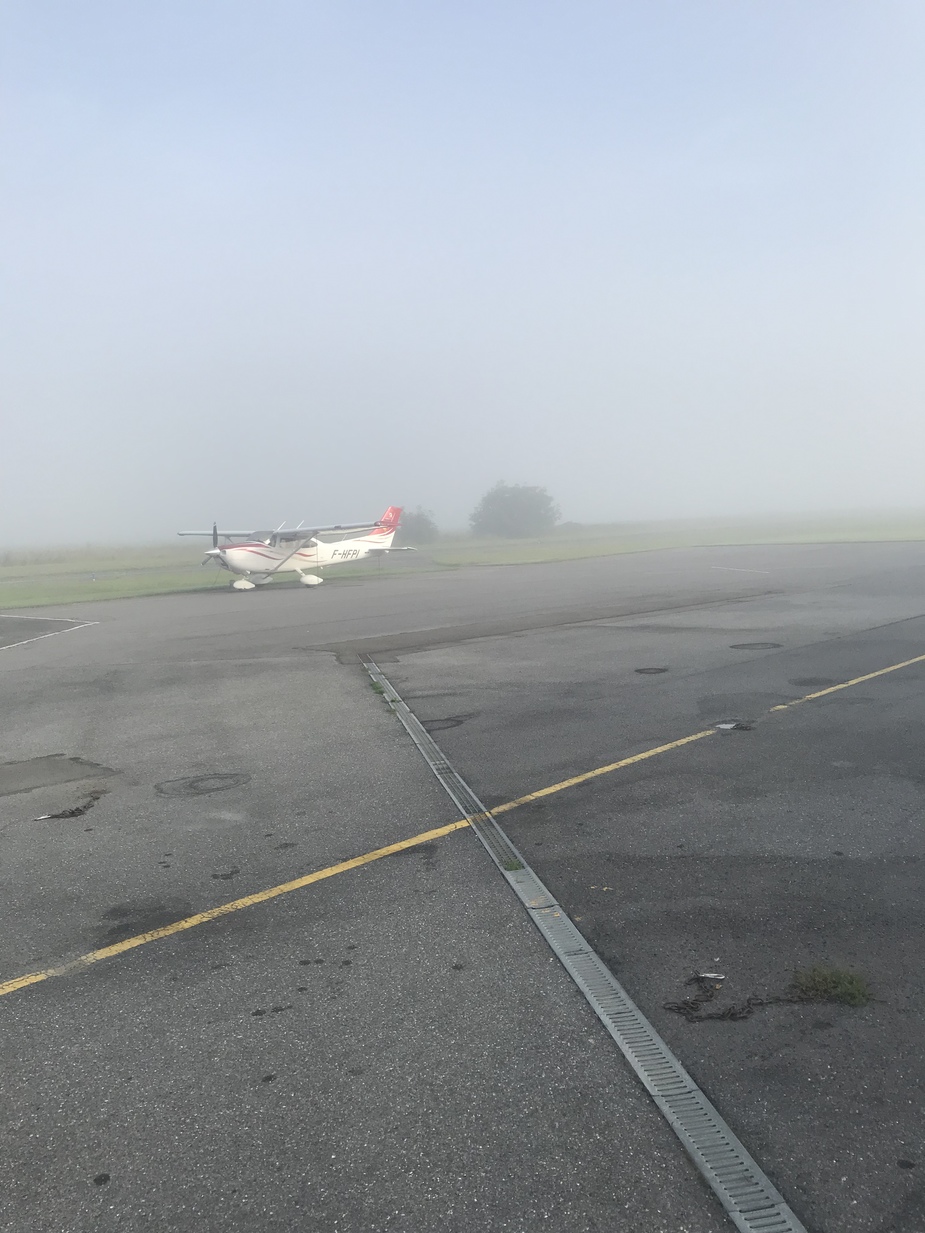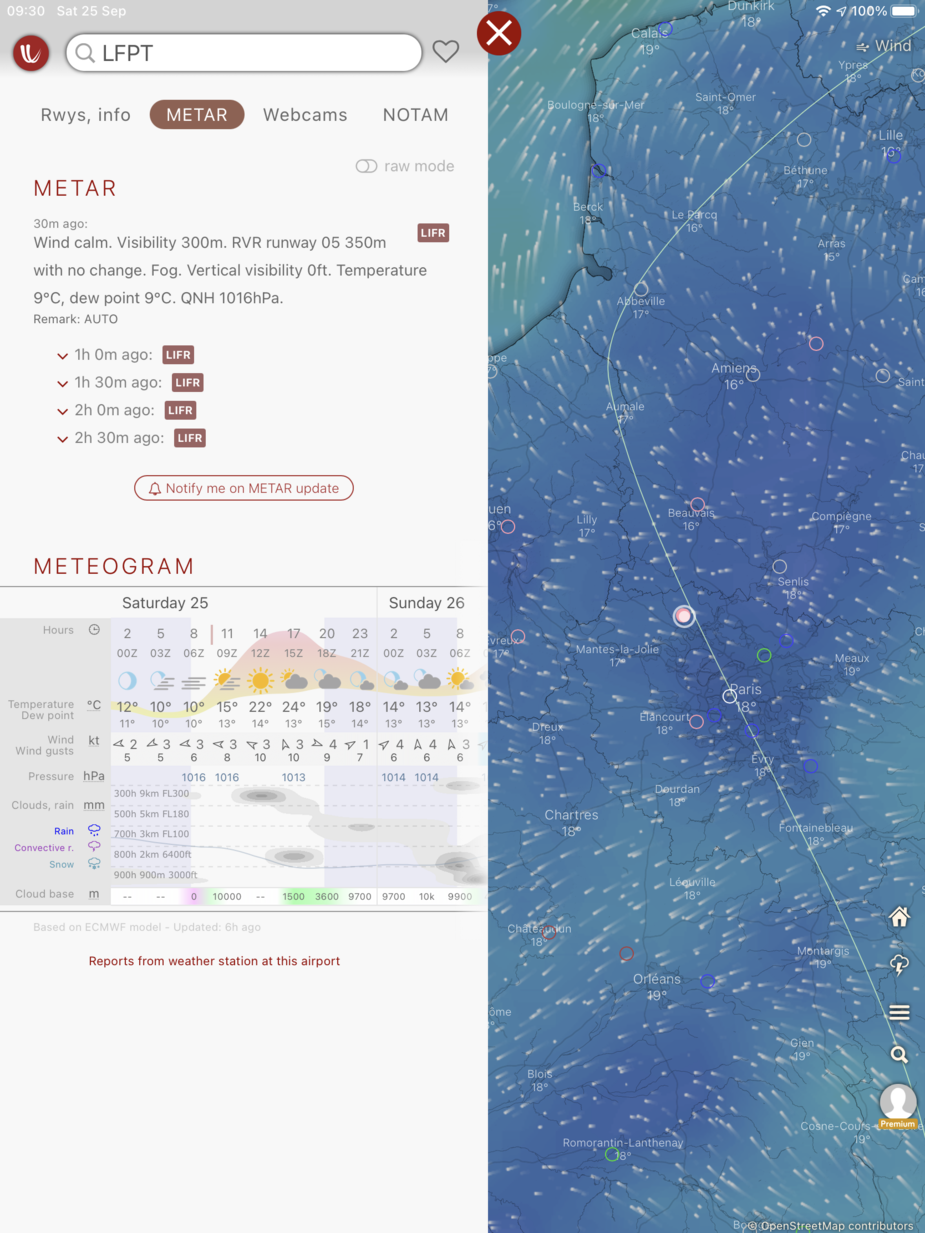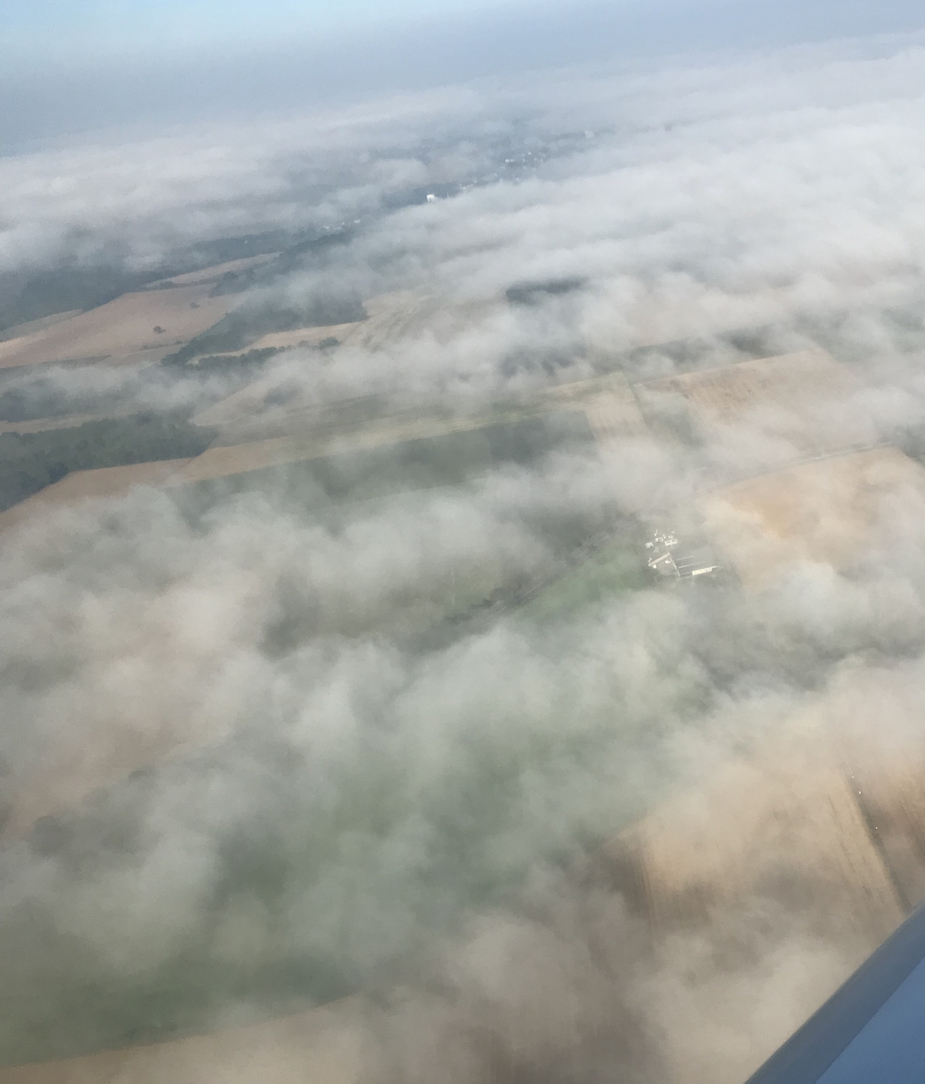Josh wrote:
The regulation says “reported visibility”. For untowered approaches in the USA, I believe an AWOS is required.
In US, for part 91 operations, the regulation requires that it is the flight visibility and not the ground visibility that is a reported visibility or an RVR report that is controlling for an approach. For an IFR approach, three basic requirements are necessary to legally descend below the MDA/DA IAW 91.175 (c) Operation below DA/DH or MDA
1) The aircraft is continuously in a position from which a descent to a landing on the intended runway can be made at a normal rate of descent using normal maneuvers,
2) The FLIGHT VISIBILITY is not less than the visibility prescribed in the standard instrument approach being used; and
3) at least one of the ten specified visual references for the intended runway is distinctly visible and identifiable to the pilot:
@NCYankee in US in non-towered airports can one still depart IFR with zero/zero? or do you need towered ATC for this? assuming one has secured his un-towered IFR clearance and the time window to depart
Do takeoff minima change to VMC min if you depart IFR when that clearance is void (no longer guaranteed separation and maybe violating clearance)
Are US ATC entitled to ask you to “remain VMC” during that IFR departure?
Part 91 operators do not have visibility minimums for takeoff, at towered or non towered airports. It may not be smart, but it is legal Certificated operators must meet the specified takeoff minimums for the airport.
As a practical matter, without a clearance to enter controlled airspace, pilots may not depart from a non towered airport in class G without a prior clearance and release from ATC to enter controlled airspace. It is pretty universal in the US, that phone numbers are available in all of the A/FD airport entries of un towered airports to contact ATC via dedicated clearance delivery phone numbers. These phone numbers go directly to ATC and one can get both a clearance and a departure release as well as close out an IFR flight plan after landing.
Yes; an N-reg in the US can depart in zero-zero. This was legal (in an N-reg) in Europe too, until some years ago.
So visibility minima for IFR Part91 takeoff have strictly nothing to do with Tower ATC presence? nor having an IFR clearance/separation to depart from Delivery/Departure ATC?
If France, in absence of ATC/AFIS in the tower one surely need +1.5km visibility for takeoff (it used to be worded as “takeoff in VMC” but “aerodromes law” has changed to “takeoff with visual manoeuvring”), where I am not sure if being on IFR clearance/separation would allow one to takeoff on IFR airport plates minima?
We had to wait for that +1.5km two weeks ago for the fog to get cooked & mixed 




If France, in absence of ATC/AFIS in the tower one surely need +1.5km visibility for takeoff
I’d say that is because there is a reg in France (is there??) that with an unmanned tower you cannot depart IFR. There is a similar rule elsewhere e.g. Croatia.
But, assuming no RVR measurement is active (with an unmanned tower this may or may not be the case, but does automated wx measurement report continuously to some nearby ATC unit?) then the vis interpretation is down to the pilot, once lined-up on the runway.
And, practically speaking, if there is nobody in the tower, then who is going to report you? There is not likely to be a “qualified wx observer” present, so the vis is “pilot interpreted”. But it is pilot-interpreted in any case if there is no official RVR measurement.
In Croatia, is it VFR departure/arrival when no ATC? or IFR departure/arrival in visual conditions?
There is a distinction: if you lost comms on takeoff you fly you departure clearance, if lost comms on arrival you are entitled to fly missed join the hold (it’s reserved for you  ) and fly IFR to alternate…
) and fly IFR to alternate…
In France, you DO depart under IFR but it seems you have to “remain visual” for traffic/terrain separation (just like IFR circling from IAP with no ATC/AFIS, without ATC you are IFR but required to comply with circling weather minima and join visual circuit like VFR, still flying as IFR because ATC exepects you to join IFR hold (your name appears on the hold gate if you can’t land as you have not cancelled IFR yet), for uncontrolled IFR departure, my understanding it’s done with +1.5km visbility without ATC (even if runway is rated for 400m takeoff with ATC)
PS: sector ATC have ATIS/STAP for weather when no ATC in tower ATC but when you call sector ATC to open FPL and get clearance, they do ask you if you have “good weather” but strictly, speaking they only care about your departure separation as you enter their sector airspace: hitting cars, trees or losing control in uncontrolled aerodromes is not their businesses
However, some ATC ask you to “climb FL80 remain VMC” in Class A TMA when asking for startup & departure while ceiling is at 1000ft, WTF? I think it just means you don’t have traffic separation untill radio & radar is established above airspace & radar altitudes? you can’t be VFR at FL80 in Class A TMA inside IMC 
On take off.In France you have the Vibal both to be used on untowered airfields and where no RVR is available at a towered airfield. You can also ask for it at an airfield equipped with RVR if you don’t believe or accept the readings. Minimum at these is 400m so no Zero/Zero but IMO you’d be pretty stupid if you can’t see anything. I had enough of that when doing my night rating and the windscreen kept misting up whatever we did to clear it.
The problem on a untowered field is that whilst you can take off with 400 metres, what do you do in between the take off and trying to get a clearance from ATC or to open your IFR plan.
You often can’t get radio contact until 2500ft or radar contact. So you are in a bit of a no man’s land/air, which you.should probably treat as VFR to be safe. I’m not sure if there is an actual regulation to cover it, but I’m sure as with many things in aviation one will be found if things go wrong. IMO one takes the common sense approach.
gallois wrote:
Minimum at these is 400m…..you can also ask for it at an airfield equipped with RVR if you don’t believe or accept the readings
So you are allowed down to that without Tower ATC, that is good to know, I taught Viball only applied when you have ATC+RVR (and lights on) for takeoff? you may have to say that “don’t believe in RVR” as those who are not in France may not be familiar 
gallois wrote:
You often can’t get radio contact until 2500ft or radar contact. So you are in a bit of a no man’s land/air, which you.should probably treat as VFR to be safe. I’m not sure if there is an actual regulation to cover it, but I’m sure as with many things in aviation one will be found if things go wrong. IMO one takes the common sense approach.
ATC likes you to stay outside controlled airspace until you are well identified & separated, it does not mean you are VFR but it means if radio & radar are not established on that departure and you are IMC you better act to stay in no man’s land rather than going freestyle in their busy airspace…
Of course no regulation covers it but in many countries things are crystal clear, no ATC/AFIS = VFR departure & Z-FPL but it’s a long way between 500ft for VFR VMC and 4000ft ATC MVA unless it’s CAVOK all the time
In France/UK, things are bit grey as you can do IFR departure & I-FPL with no ATC/AFIS but I was not sure you can go down to aerodrome plates takeoff minima? my assumption was 1.5km visibility is all you need, maybe 10ft ceiling? (you are not coming back anyway, it’s outgoing only  in NCO, you don’t need takeoff alternate nor factor engine failure on departure or plan a return)
in NCO, you don’t need takeoff alternate nor factor engine failure on departure or plan a return)
I think it’s important to also note that for RVR once you are on approach and you have descended through the 1000ft gate (you should look at it as a gate) any consequent RVR readings from the Tower that are lower than the RVR required can be discarded by the pilot.
So you get the ATIS which gives you RVR1500M ceiling 400ft you pass the IAF, descend on the approach and pass 1000 ft above ground level, the controller gives you an update to the RVR which now is 400m with a ceiling of 250ft (or even lower than that) you are legal to continue to approach and land if visual reference to the runway is acquired.